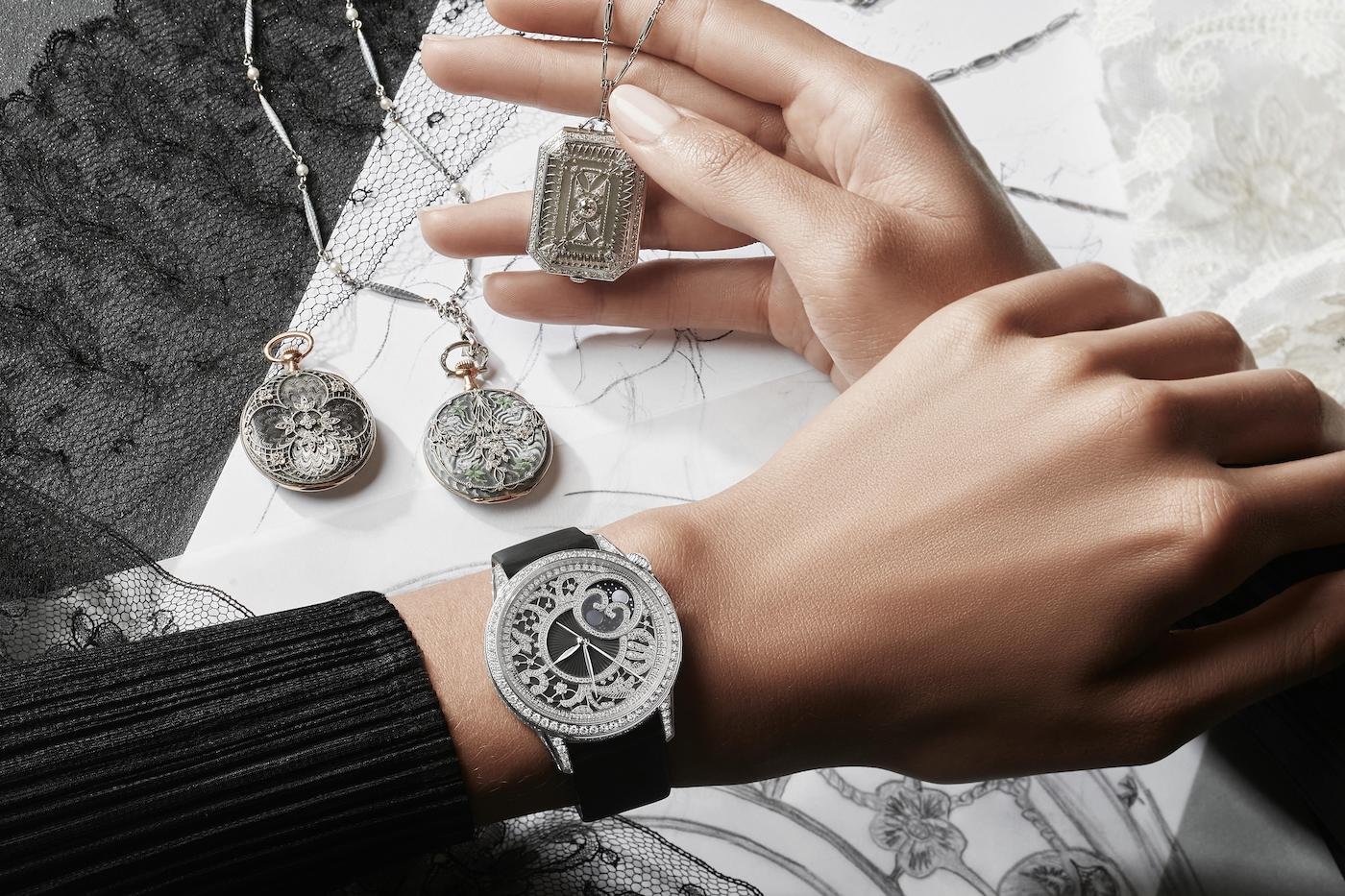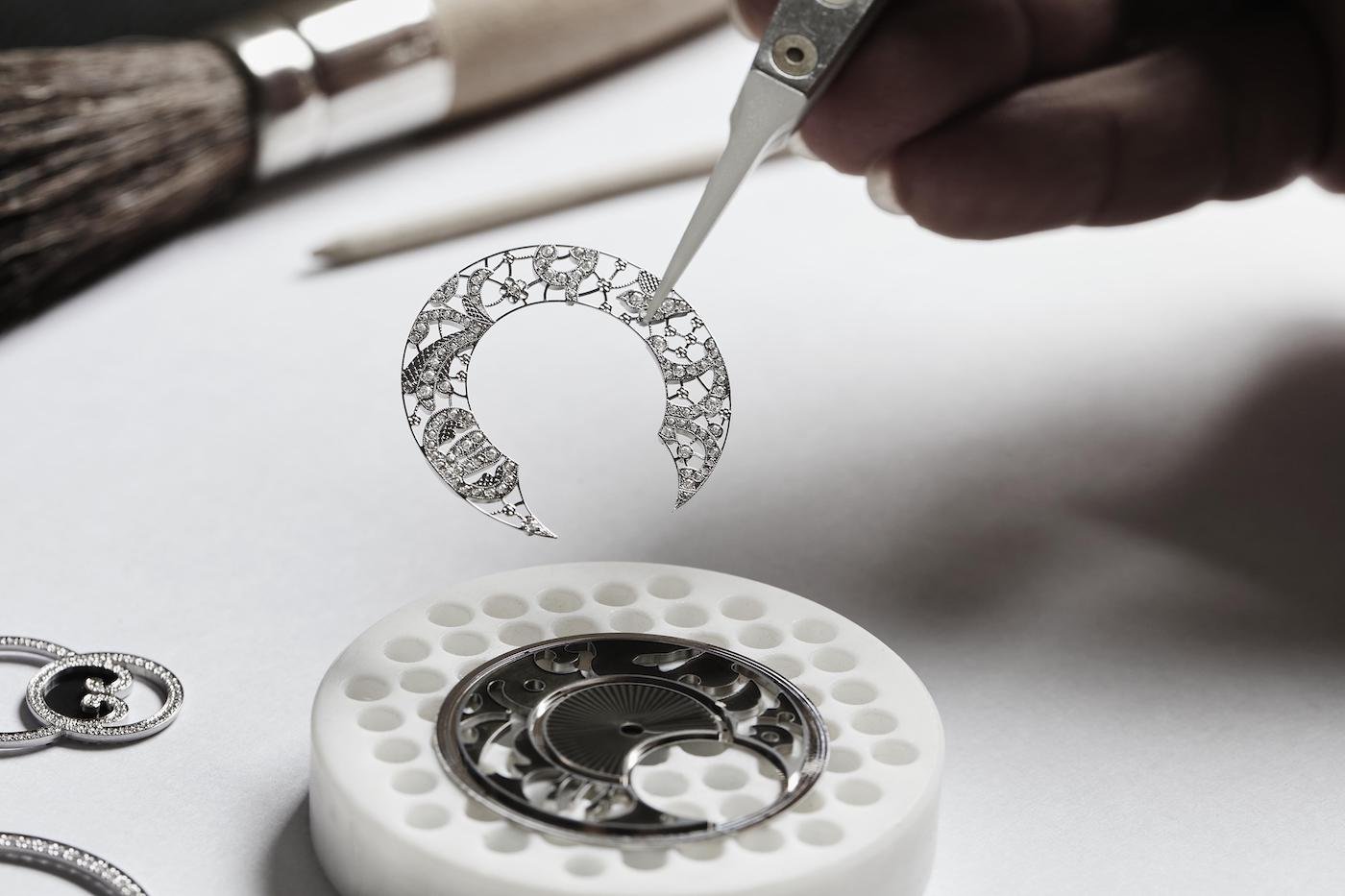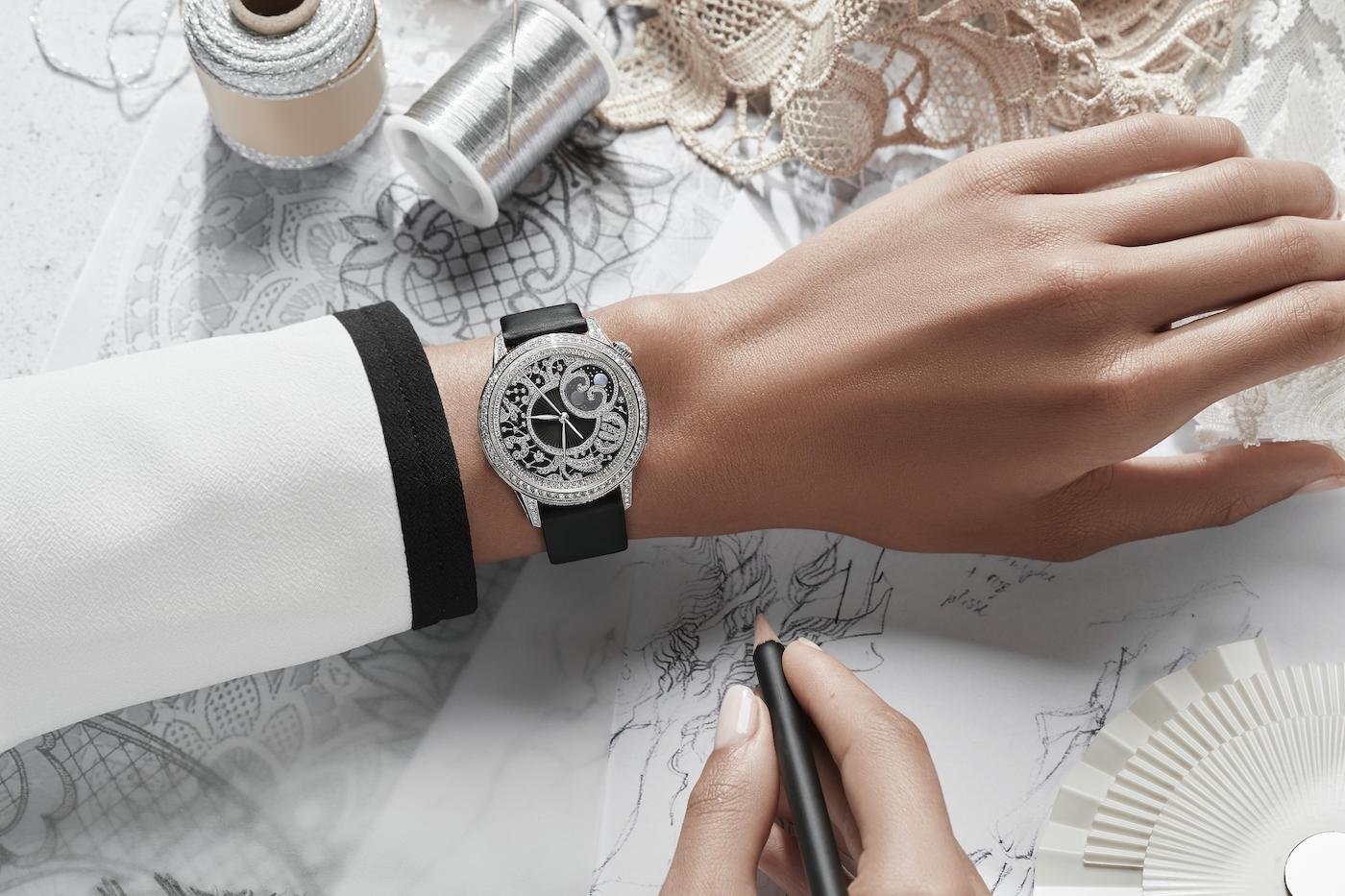he Égérie collection from Vacheron Constantin made a rather discreet debut in 2020, in the midst of the pandemic. Deftly blending watchmaking with elements from haute couture, it joins a long tradition of ladies’ watches from a Manufacture established in 1755. The latest addition to the collection - the Égérie Creative Edition – combines grand feu enamel with engraving, tapisserie and gem-setting to recreate the delicate beauty of Burano lace.
While Vacheron Constantin is a name most often associated with complication timepieces for a masculine clientele, anyone fortunate enough to view its archives will discover a different facet in the form of jewelled watches for women, fitted with movements that were specially developed for these smaller diameters.
-

- Égérie Creative Edition
Perusing these archives also reveals that a third of the letters addressed to the Manufacture in the nineteenth century were from women who clearly had more than a passing interest in the subject, given their suggestions of new materials or different links that would make their watch bracelet more supple. Some even included sketches to prove their point.
A third of the letters addressed to the Manufacture in the nineteenth century were from women who clearly had more than a passing interest in the subject.

Out of thin air
Vacheron Constantin’s watches certainly had nothing to envy those that bore the name of the grand jewellers whose boutiques lined Place Vendôme. Indeed, over a period of sixty years beginning in 1879, the Manufacture worked with Ferdinand Verger (Verger Frères after 1921) to create jewellery that gave the time. Together, jeweller and watchmaker crafted precious watches, including a number of magnificent pieces in the Art Nouveau and Art Deco styles.
-

- A 1908 pendant watch
The most recent addition to the Égérie collection continues this tradition of beautiful timepieces for women. The dial is adorned with an engraved and gem-set pattern that resembles Burano lace, made famous by the punto in aria (literally, “stitch in the air”) technique that was invented by sixteenth-century lacemakers on this tiny island near Venice. In a combination of transparency and raised motifs, Burano lace lends itself to all manner of figurative and geometric designs. Vacheron Constantin has chosen to pay its tribute to this extraordinarily intricate needlework with the Égérie Creative Edition, taking inspiration from actual patterns for a watch that was more than two years in the making.
-

- A 1909 pocket watch
This isn’t the first time the Manufacture has transposed embroidered motifs to delicately wrought decorations. Examples can be found “in particular during the Art Nouveau and Art Deco periods,” comments Christian Selmoni, director of Style and Heritage at Vacheron Constantin, adding that, “watches with elaborate and jewelled decorations appeared in the early 1900s, such as pendant watches made in 1908 and 1910, and a pocket watch from 1909. Not forgetting early wristwatches. They owe their success to the women who were first to wear them. The Égérie Creative Edition is the latest chapter in this story.”
This isn’t the first time the Manufacture has transposed embroidered motifs to delicately wrought decorations. Examples can be found in particular during the Art Nouveau and Art Deco periods.

A source of wonder
This new watch, which is fitted with an in-house automatic mechanical movement, calls upon multiple crafts. They are watchmaking, engraving, tapisserie, gem-setting and enamelling. Tapisserie, a technique similar to guillochage, takes the form of a pleated design on a silver base. Enamelling is represented by the plique-à-jour enamel which partially covers the moon-phase display. In this painstaking technique, the enamel is applied inside a cell with no backing so that, after firing, light can pass through it, not unlike a stained-glass window. The engraver’s art is expressed in a white gold lace that is barely thicker than an eyelash. Lastly, the translucent black enamelled dial sparkles with 250 brilliant-cut diamonds. A further 292 diamonds are set in the case and crown.
At the Burano Lace Museum we learn how, “like Vacheron Constantin, we are perpetuating a unique expertise that is the legacy of generations. Burano needle lace was the impetus and inspiration for an art which then spread throughout Europe. The stitches were perfected in Burano by master lacemakers whose virtuosity was such that they travelled beyond the island to pass on this expertise.”
The Égérie Creative Edition is the meeting point for two arts, watchmaking and lacemaking, that are capable of the most extraordinary wonders. The past joins the present in a world where the meanders of time are measured not in hours and minutes but by age-old gestures.
The translucent black enamelled dial sparkles with 250 brilliant-cut diamonds. A further 292 diamonds are set in the case and crown.












